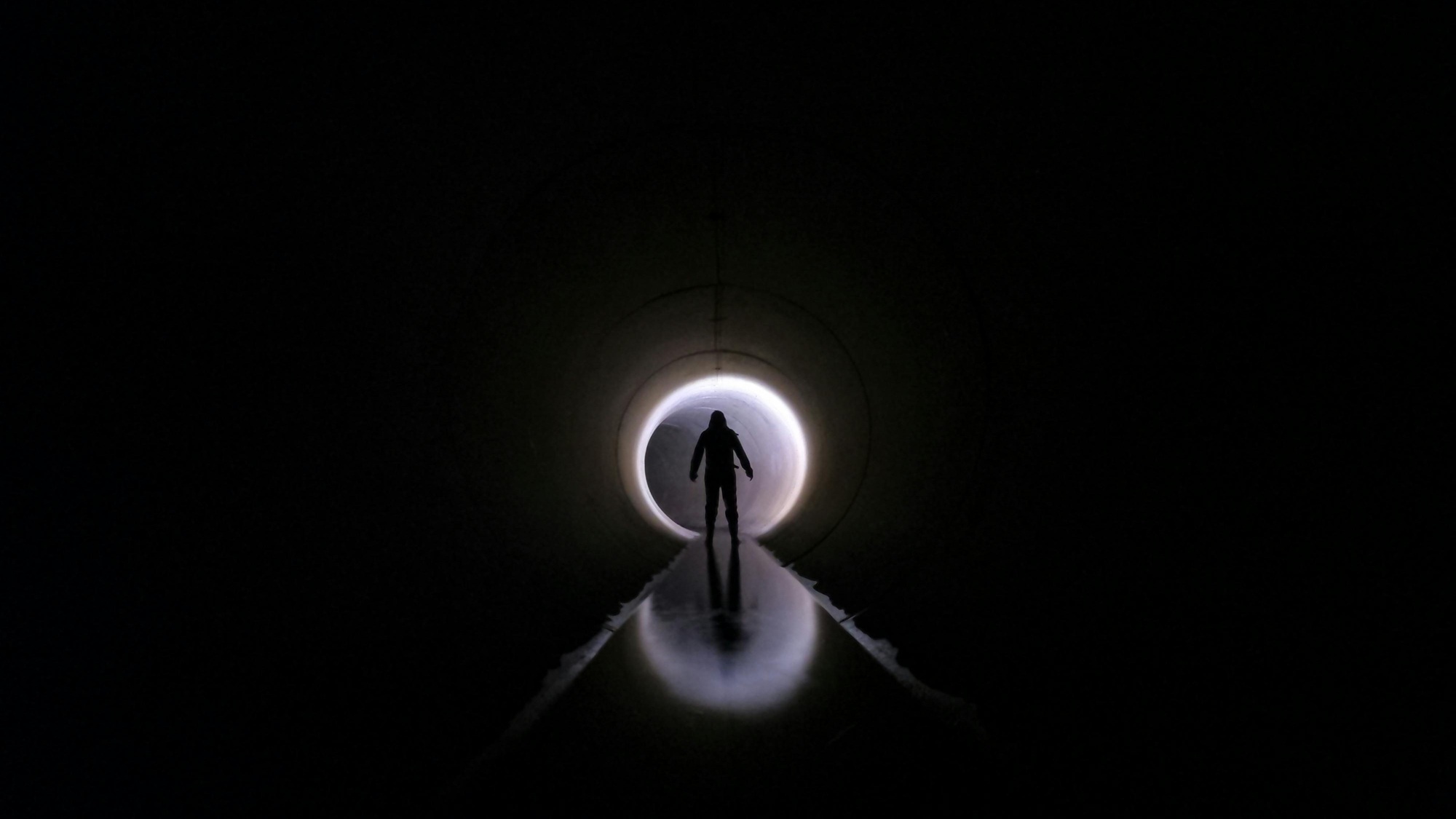It’s quite common for people to associate near-death experiences, or NDEs, with their religious views. But what happens when someone doesn’t share those same beliefs? What happens when an atheist has a near-death experience? What do atheists see in near-death experiences, for that matter? And can an atheist even have a near-death experience to begin with?
Simply put, yes, atheists can have near-death experiences. In fact, quite literally anyone can have a near-death experience. The odds of having an NDE are not altered by religious views, race, age, gender, or education level. NDEs do not require any prior beliefs or world views in order to make them possible. And they’ve been experienced by people in every corner of our globe, and throughout every culture.
Does having an NDE challenge a person’s religious views? Does it impact their take on the concept of consciousness surviving bodily death? Let’s examine what atheists see in near-death experiences and how having an NDE can change their perceptions.
NDEs vary from one culture to the next
Before we look at atheists having NDEs, we should take a moment to examine how NDEs are interpreted across cultures. Because while NDE characteristics are shared globally, how a person might describe those characteristics can be influenced by personal beliefs and cultural cues in big ways.
Take, for instance, the “tunnel” so often described in NDEs. In the western world, we often hear the word “tunnel” mentioned in NDE accounts. But some experiencers in regions where tunnels aren’t common infrastructure features describe it differently. They might instead describe moving through the neck of a gourd or the funnel of a plant. The concept remains the same, but the phrasing adapts to what’s familiar.
Encounters during NDEs often involve deceased loved ones. But encounters with other beings are often seen through the lens of a person’s cultural background. For instance, a religious person might link these beings with religious figures from their own beliefs.
Of course, atheists don’t believe in these religious or spiritual figures. As such, they might say these beings are indescribable, or refer to them as mystical or unexplainable. They might contextualize them through popular culture, describing them as extraterrestrial. Or they might even turn to popular religious figures that are generally inescapable in the western world.
Read more: Are pets seen in near-death experiences?
The case of a world-renowned atheist and his near-death experience
Sir Alfred J. Ayer was, in his time, a world famous philosopher. He was a staunch supporter of the concept of “logical positivism”. The belief that if you can’t prove something with science or logic, it’s meaningless. He argued it wasn’t worth anyone’s time to discuss anything that can’t be measured, tested, or logically demonstrated.
God, the afterlife, or anything supernatural? Ayer saw all of that as bupkis. It’s not so much that it’s wrong, but that it isn’t worth considering to begin with.

But in 1988, the then 77 year-old Ayer choked on his dinner while hospitalized in London with pneumonia. His heart had stopped for approximately four minutes before he was revived. And during that time, Ayer had what today we would describe in NDE research terminology as a distressing NDE. An NDE with negative features, as opposed to the far more “pleasurable” type of NDE that most people have.
Read More: Can near-death experiences be scientifically explained?
Ayer’s distressing NDE
In an article titled “What I saw when I was dead“, Ayer described being “confronted by a red light, exceedingly bright, and also very painful even when I turned away from it.” He went on to explain that this light was “responsible for the government of the universe” and that he had met “two creatures who had been put in charge of space,” who had recently concluded “an inspection” of space.
Ayer went on to say his near-death experience may have been “delusive”. But he also admitted it may very well have been objectively real. And he explained how a friend’s mother had a similar experience after having suffered a heart attack many years earlier. It served as an acknowledgment that he wasn’t alone in having an NDE, and that their characteristics were of note.
On the face of it, these experiences, on the assumption that the last one was veridical, are rather strong evidence that death does not put an end to consciousness.
Sir Alfred J. Ayer, “What I saw when I was dead”
Ayer admitted in his essay that consciousness may survive bodily death. But he did also emphatically state that proof of an afterlife would in no way prove the existence of God or a deity. “My recent experiences have slightly weakened my conviction that my genuine death, which is due fairly soon, will be the end of me, though I continue to hope that it will be,” Ayer wrote. “They have not weakened my conviction that there is no god.”
Not every atheist has the same outcome as Alfred Jules Ayer
While Sir Ayer continued to refute the existence of God until his death the following year, other prominent skeptics reported that their own NDEs dramatically changed their views.
John Wren-Lewis was a famous British scientist and intellectual who, while not a fervent atheist, was deeply skeptical and critical of traditional religious and spiritual claims. He rejected conventional religion and the belief in a personal God. He aligned himself closely with the “Death of God” movement, which argued that traditional concepts of God were no longer viable in the modern world.
In 1983, John was nearly poisoned to death in Thailand during an attempted robbery, during which he had a near-death experience. This led him to embrace aspects of spirituality and mysticism he had previously dismissed.
American author Howard Storm was an atheist prior to his NDE in 1985, following a close brush with death from a gastrointestinal rupture. Like Sir Ayer, Storm too had a distressing NDE, with pale humanoid creatures attacking him when he refused to follow them. Mentioning “God” would cause the creatures to retreat. Storm says that calling out for Jesus to save him led to his having been rescued by “spiritual beings of light.” He would later go on to become a Christian minister.
Dr. George Ritchie had no particular religious beliefs when he had an NDE in 1943—decades before Dr. Raymond Moody coined the phrase “near-death experience”. Ritchie would go on to become a noted psychiatrist and Christian speaker as a result of what he saw in his NDE.
Read More: Are NDEs really proof of the afterlife?
Yes, atheists can have NDEs. But do they necessarily change their views on religion?
At first glance, near-death experiences seem easy to dismiss. Are they delusions, hallucinations, exaggerations? But then objectively reviewing the evidence—the countless first-hand accounts, the peer-reviewed research, and more—certainly does challenge the idea of consciousness not surviving bodily death. Whether or not it also challenges the concepts of faith or the existence of a higher power tends to be a bit more anecdotal.
To date, we have not found credible, well-documented reports of a person having an NDE and remaining entirely unchanged in their views. For atheists, this change might involve a broadening of their views on the continuation of consciousness, or even the adoption of spirituality or religion. For those who were already spiritual or religious, those beliefs may deepen. But we don’t yet know of a single credible case where an atheist had an NDE and their views remained unaltered as a result.
IANDS strives to better understand NDEs
If even lifelong skeptics can emerge from NDEs with shaken convictions, what might that suggest about the mysteries of consciousness and death? And what are we doing to solve all of these unanswered questions?
As an educational nonprofit, IANDS is dedicated to researching NDEs and related phenomena, and to spreading education and awareness. We strive to normalize conversations about NDEs. And we invite everyone to participate, regardless of their views.
IANDS relies on the generosity of people like you to advance our mission forward. Please consider making a tax-deductible donation, visiting our online shop, or joining IANDS and enjoying a myriad of member benefits. And be sure to visit us at our annual IANDS conference, too, where you’ll explore the extraordinary with the leading voices in our field. Whether you approach this topic as a believer, a skeptic, or somewhere in between, IANDS strives to provide space for these conversations.




